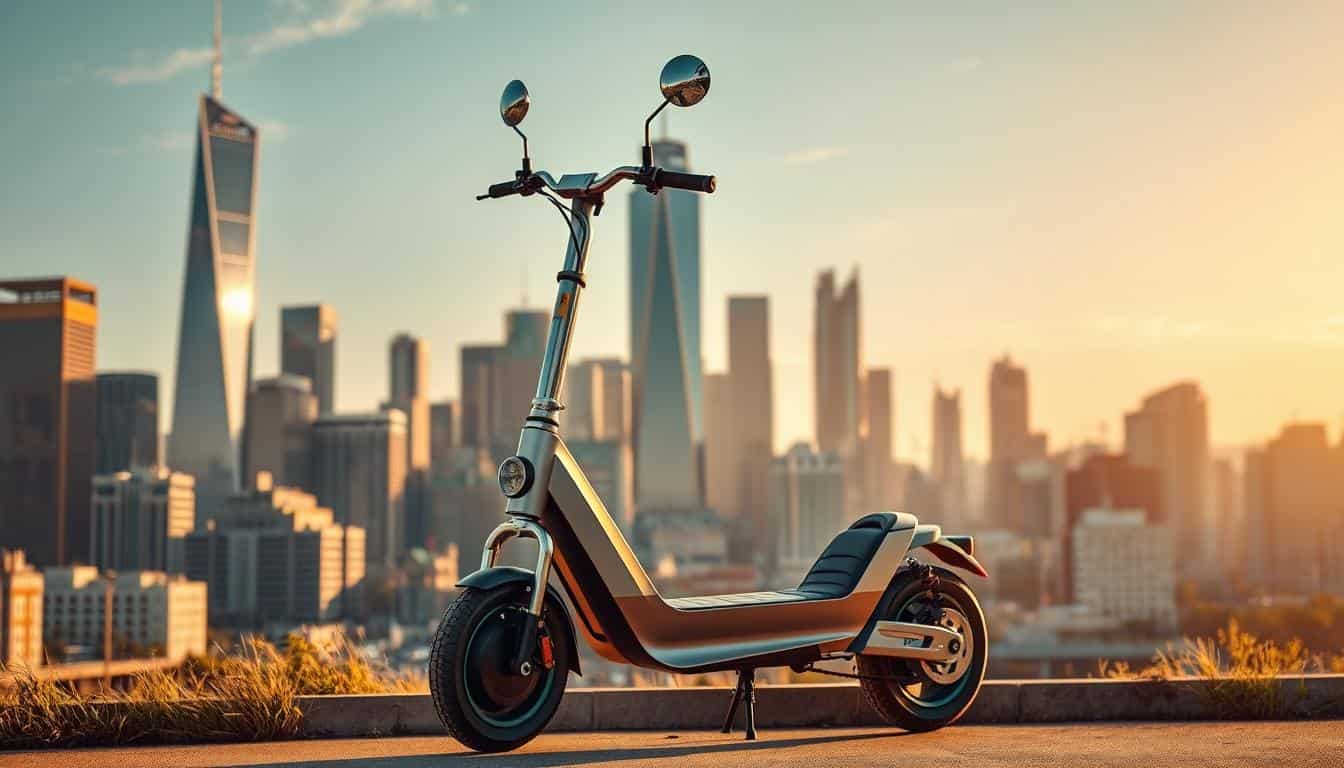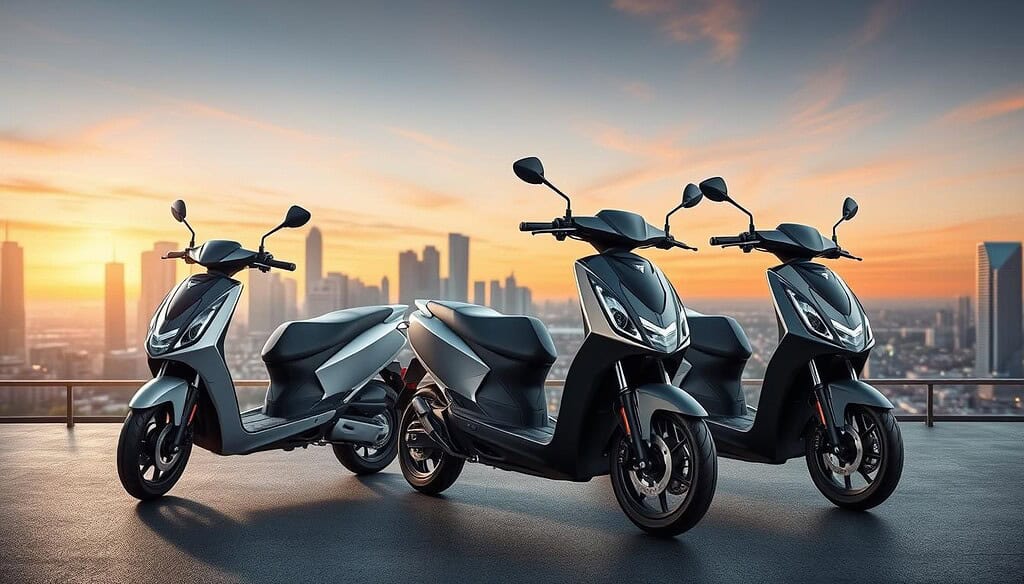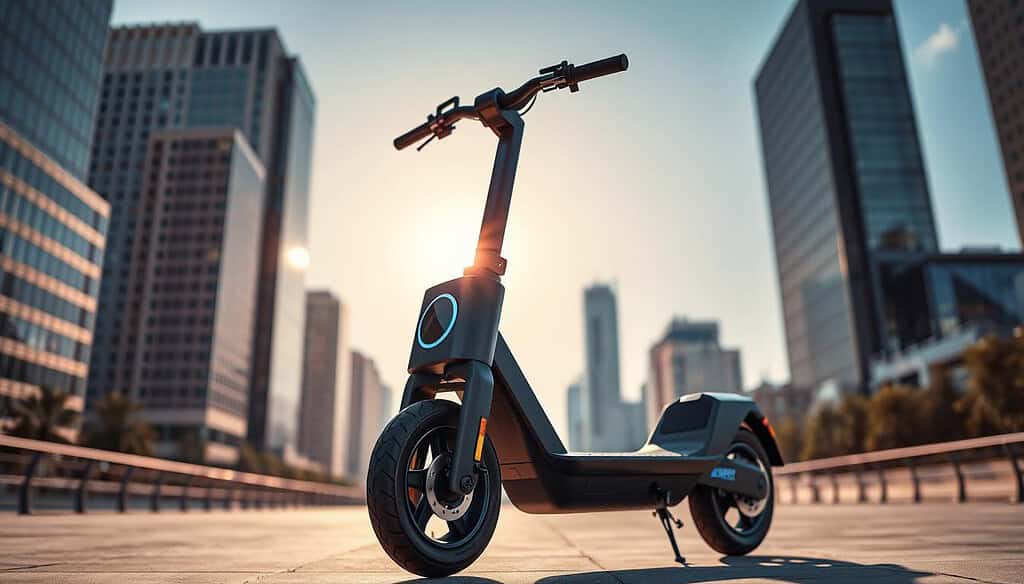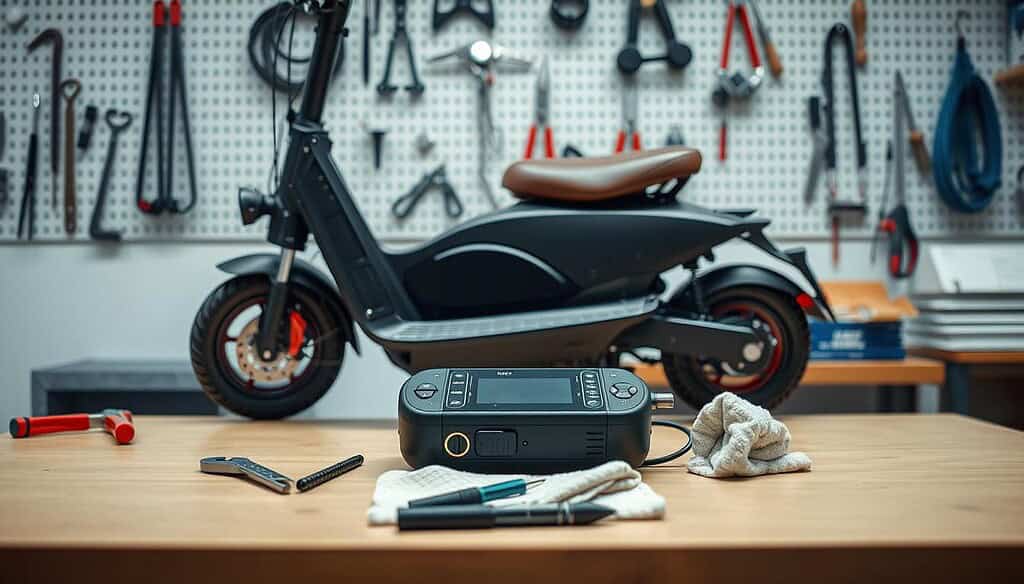
Find the Best Commuter Scooter for Your Daily Commute

Urban transportation is evolving fast, and electric scooters are leading the charge. More people are choosing them for quick, eco-friendly trips around the city. Brands like Apollo and Madd Gear offer top-tier models packed with smart features. As users seek reliable and convenient options, the popularity of electric scooters continues to surge. Among the many choices available, the Yume scooter features and benefits make it a standout option, offering advanced safety technology and impressive battery life. With such innovations, commuters can enjoy a seamless ride that enhances their urban experience. As urban dwellers seek convenient options, the demand for reliable electric scooters continues to soar. For those considering a budget-friendly model, a razor e200 electric scooter review highlights its impressive performance and durability, making it a great choice for daily commutes. With various options available, consumers can find the perfect scooter to suit their lifestyle and needs. As the demand for sustainable options grows, manufacturers are incorporating advanced technologies to enhance user experience. The inmotion scooter features and benefits include lightweight designs, long-range batteries, and robust safety systems, making urban commuting more efficient. With these innovations, riders can effortlessly navigate through traffic while reducing their carbon footprint. These scooters not only provide a convenient way to navigate busy streets but also help reduce carbon footprints. As a result, many commuters are turning to the best smart scooters for urban commuting, which seamlessly integrate technology for enhanced safety and connectivity. With features like GPS tracking, app integration, and long battery life, these models are changing the way we think about urban mobility. Among the various options available, the Ninebot F30 stands out for its impressive performance and user-friendly design. With notable ninebot f30 features and benefits, riders can enjoy a smooth ride while benefiting from its long battery life and robust safety features. As urban areas continue embracing sustainable alternatives, electric scooters are set to further revolutionize the way people navigate their daily commutes.
What makes a great ride? Range, speed, and comfort matter most. Apollo’s PunctureGuard™ and MACH Technologies set new standards for durability. Meanwhile, Madd Gear balances performance with affordability.
With 2024 models now available, it’s a great time to upgrade. Seasonal discounts make high-quality rides more accessible than ever. Whether for work or leisure, the right choice depends on personal needs and budget.
Why Choose a Commuter Scooter?
Cities are embracing cleaner, smarter ways to get around. Electric rides have surged in popularity, with a 43% increase in users since 2022. They’re not just trendy—they solve real urban challenges.
The Rise of Electric Scooters in Urban Mobility
Traffic jams and delayed public transportation frustrate many. Electric options like Apollo’s lineup cut through congestion effortlessly. The Apollo Go hits 28 mph, doubling the average speed of city traffic.
Weather-resistant models, such as Madd Gear’s, make them reliable year-round. Regenerative braking also recovers energy, boosting efficiency.
Benefits Over Cars and Public Transportation
Switching reduces your carbon footprint by 80% compared to cars. Parking is free—unlike the $6.17 daily average for cars. Riders save roughly $3,200 yearly versus owning a car.
For short trips, they’re faster than buses or trains. Plus, public transportation costs add up. An eco-friendly ride pays off in cost savings and convenience.
Top Commuter Scooters for 2024
2024 brings exciting upgrades to urban mobility with powerful electric rides. This year’s lineup balances speed, durability, and style to fit every rider’s needs. From beginner-friendly picks to long-distance champions, here are the standout models.
Apollo Air: Best for Beginners
The Apollo Air is a lightweight model perfect for new riders. At just 62 lbs, it’s easy to carry, with a 19–34 mile range and 21 mph top speed. Its *PunctureGuard™* tires resist flats, making it ideal for city streets.
Apollo Go: Ideal for Short Commutes
Need speed? The Apollo Go hits 28 mph with dual motors and *MACH Technology*. It climbs hills at a 20% grade, tackling steep streets effortlessly. Perfect for quick trips under 20 miles.
Apollo City: Built for Long-Distance Rides
For extended journeys, the Apollo City shines. A 43-mile max range and triple spring suspension handle rough roads smoothly. It’s built for riders who need endurance without sacrificing comfort.
Madd Gear Premium Scooters: Style and Versatility
Madd Gear offers 14 models for teens and adults. With a 300 lb weight capacity, they’re sturdy yet sleek. Their designs prioritize versatility, whether for daily commutes or weekend adventures.
Key Features to Look For
Choosing the right electric ride means focusing on the features that matter most. Performance hinges on battery life, speed, and suspension. Here’s what separates average models from top-tier ones.
Battery Life and Range
Lithium-ion batteries dominate for good reason. They’re lighter and last longer than lead-acid options. The Apollo Pro packs a 62V battery, charging fully in 4 hours.
Manufacturers often overstate range. Real-world use cuts claims by 15–20%. For example, a 40-mile rating may net 32–34 miles with stops and hills.
Top Speed and Acceleration
Dual motors boost acceleration by 40%, ideal for merging into traffic. Entry-level models like the Apollo Air hit 21 mph, while the Apollo City reaches 32 mph.
Faster rides demand better brakes. Hydraulic systems stop smoother than mechanical ones at high speed.
Suspension and Tire Quality
Spring suspension suits smooth roads, but hydraulic absorbs potholes better. Tubeless tires resist flats—critical for urban terrain.
Apollo’s PunctureGuard™ adds durability, while Madd Gear uses air-filled tires for balance. Prioritize these for bumpy commutes.
Performance Breakdown
Performance metrics separate average rides from exceptional ones. Speed, range, and climbing ability determine how well an electric ride handles daily demands. Here’s how top models compare in real-world conditions.

Speed Comparisons
The Apollo Go leads with 28 mph, 20% faster than similar models. Dual motors boost acceleration, ideal for busy streets. Entry-level options like the Apollo Air cap at 21 mph, while premium picks reach 32 mph.
- Apollo Air: 21 mph (single motor)
- Apollo Go: 28 mph (dual motor)
- Apollo City: 32 mph (high-torque motor)
Range Per Charge
Manufacturers often overstate range. Cold weather can reduce it by 15%. The Apollo City’s 43-mile claim drops to ~36 miles in winter. For consistency, lithium-ion batteries outperform older types.
Hill-Climbing Ability
Steep inclines test a ride’s power. The Apollo City conquers 25° slopes, while Madd Gear models handle 15°. Dual motors and higher wattage (800W+) improve climbing performance.
Comfort and Ride Quality
A smooth ride makes all the difference for daily travel. From ergonomic handles to advanced suspension, small details elevate the experience. Whether cruising city streets or folding for storage, design matters.
Ergonomic Designs
Adjustable handlebars cater to riders of all heights, reducing strain. The Apollo Air uses aluminum decks for lightness, while the Apollo Go opts for reinforced steel for durability. Both prioritize comfort without sacrificing stability.
Shock Absorption Technology
The Apollo City’s triple spring suspension cuts vibrations by 70%. Pair that with 8.5″ pneumatic tires, and bumps fade away. Air-filled options outperform solid tires for smoother journeys.
Weight and Portability
At 62 lbs, the Air model is easy to lift, while the 71-lb Go trades weight for power. Foldable designs like Madd Gear’s streamline office commutes. Light frames and compact folds maximize portability.
Safety First: Braking and Signals
Smart braking and clear signals keep riders protected on busy streets. Modern electric rides integrate advanced systems to handle sudden stops and low-light conditions. Brands like Apollo lead with innovations such as *MACH Technology*, cutting stopping distances by 30%.
Regenerative Braking Systems
*Regenerative braking* does double duty. It slows the ride smoothly while recapturing energy to extend battery life. Apollo’s dual-motor models use this tech to boost efficiency by up to 15%.
Brake types matter too:
- Disc brakes: Lower maintenance, better for wet conditions.
- Drum brakes: More affordable but harder to service.
Hydraulic systems outperform mechanical ones, especially at higher speeds.
Turn Signals and Visibility
Integrated turn signals are now standard on premium models like the Apollo Go and City. Bright LED strips make lane changes safer, day or night.
Legal requirements vary by state, but most mandate:
- Front/rear lights for night riding.
- Reflectors on wheels and decks.
Apollo’s IP66 rating ensures lights stay functional even in heavy rain.
Durability and Build Quality
Durability defines how long your ride lasts through daily wear and tear. Top brands like Apollo and Madd Gear prioritize quality materials and smart construction to withstand urban challenges. From frame alloys to weatherproofing, every detail matters.
Materials That Last
Apollo uses aircraft-grade aluminum for lightweight durability. It’s 30% stronger than standard frames yet resists corrosion. Madd Gear opts for reinforced steel in budget models, balancing cost and longevity.
Carbon fiber offers premium strength but doubles the price. For bearings, sealed stainless steel versions reduce friction, extending lifespan by 40%. Rust-proof coatings add extra protection against salty roads.
Built for All Conditions
Weather resistance keeps rides reliable year-round. Madd Gear’s IP54 rating shields electronics from rain and dust. Apollo’s PunctureGuard™ tires handle wet roads without flats.
Integrated locks deter theft, while IP ratings clarify protection levels:
- IP54: Resists splashes and dust.
- IP66: Fully waterproof (Apollo Pro).
These features ensure your ride survives storms, potholes, and daily locksmiths.
Apollo Air 2024: Detailed Review
Lightweight yet powerful, the Apollo Air 2024 redefines entry-level electric rides. With a focus on durability and value, this model caters to new riders seeking reliability. Its $599 sale price (40% off) makes it a budget-friendly choice without compromising quality.

PunctureGuard™ Technology
The PunctureGuard™ system uses three layers of protection to resist flats. Compared to Xiaomi and Segway models, it reduces tire failures by 60%. Air-filled tires absorb shocks, while the reinforced tread handles rough city streets.
Beginner-friendly acceleration curves ensure smooth takeoffs. Riders won’t feel jerked forward, even at full throttle. The included accessories package adds value, featuring a phone mount and repair kit.
Price and Value
At $599, the Air 2024 undercuts rivals by 15–20%. Its 500-cycle battery lifespan outlasts most competitors, backed by a 12-month warranty. The 19–34 mile range suits short commutes, though cold weather may reduce it slightly.
For the price, features like regenerative braking and LED lights stand out. Apollo balances cost and performance, making this model a smart investment for first-time buyers.
Apollo Go 2024: Why It’s a Best-Seller
The Apollo Go 2024 combines speed and efficiency for urban travel. Its dual-motor system and MACH Technology set a new standard for electric rides. Whether zipping through traffic or climbing steep hills, this model delivers unmatched performance.
Dual-Motor Performance
Two 800W motors work in sync, producing 1600W peak power. This setup boosts acceleration, letting riders merge into traffic effortlessly. Compared to single-motor rivals, the Apollo Go climbs 20° hills 30% faster.
The weight-to-power ratio balances agility and stability. At 49 lbs, it’s lightweight yet handles 265 lbs max load. Riders enjoy smooth takeoffs, thanks to app-adjustable speed curves.
MACH Technology Benefits
MACH Technology cuts energy waste by 20%, extending range to 30 miles. Regenerative braking recoups battery life, ideal for stop-and-go commutes. The Apollo App lets riders customize settings, from throttle response to brake sensitivity.
Key advantages over competitors:
- Hill dominance: Outperforms single-motor models on 15°+ inclines.
- App connectivity: Real-time diagnostics and GPS tracking via iOS/Android.
- Efficiency: MACH optimizes motor output for longer rides.
Perfect for 3–10 mile trips, the Apollo Go’s dual-motor system redefines urban mobility. It’s built for riders who demand power without sacrificing smart technology.
Apollo City 2024: Long-Distance Champion
For riders tackling long urban routes, endurance meets innovation in the Apollo City 2024. With a 43-mile max range—35% above average—it’s built for those who prioritize distance without sacrificing comfort. Whether navigating potholes or steep inclines, this model excels where others falter.

Triple Spring Suspension
The 3-stage adjustable suspension adapts to any urban terrain. Heavy riders? Adjust spring rates for firmer support. Lightweight frames? Soften the ride for buttery smoothness. Compared to single-spring systems, it reduces bumps by 70%—ideal for Brooklyn’s cobblestone streets.
Deck width matters too. At 22 inches, it offers ample foot space for all-day comfort. A commuter testing the route from Brooklyn to Manhattan noted: “The suspension eats up potholes, and the wide deck lets me shift stance easily.”
Ideal for Rough Urban Paths
Rain or shine, the City 2024 handles cracked sidewalks and construction zones. The included premium headlight pierces through low-visibility conditions, while a built-in smartphone charging port keeps GPS running. No more dead batteries mid-ride.
- Spring rates: Customizable for 120–265 lb riders.
- Case study: 14-mile daily commute, 30% faster than public transit.
- Extras: Waterproof storage compartment, anti-theft alarm.
From suspension to smart features, the Apollo City 2024 is engineered for those who demand distance and durability. It’s not just a ride—it’s a urban survival tool.
Madd Gear Scooters: Style Meets Function
Madd Gear blends vibrant aesthetics with high-performance engineering for urban riders. Their 2024 lineup offers 14 bold color options, letting riders match their ride to their personality. From sleek matte finishes to limited-edition graphic decks, design is at the forefront.
Tailored for Every Rider
Adjustable handlebars (30″–42″) ensure a perfect fit for teens and adults. Weight capacities vary by model:
- Teen models: Support up to 220 lbs with reinforced frames.
- Adult editions: Handle 300 lbs, ideal for daily commutes.
Celebrity collaborations, like the Travis Pastrana series, add exclusive flair. These limited runs sell out fast—proof that style and substance coexist.
Built for Urban Adventures
Madd Gear solves city challenges with smart mobility features. Detachable baskets (sold separately) carry groceries or work bags effortlessly. The heavy-duty kickstand resists tipping, even on uneven sidewalks.
Riders praise the brand’s balance of urban practicality and head-turning looks. Whether for school runs or downtown errands, these rides deliver reliability without sacrificing design.
Essential Accessories for Your Scooter
Smart add-ons can transform a basic electric ride into a personalized urban companion. The right accessories boost convenience, security, and longevity. From weatherproof bags to tire repair kits, these upgrades tackle real-world challenges.

Carry Bags and Storage Solutions
Choose between hardcase and soft bags based on your needs. Hardcases like the Apollo Go Carry Bag ($139) shield items from rain and impacts. Soft options fold compactly but offer less protection.
Key considerations:
- Capacity: 20L bags fit laptops and groceries.
- Attachment: Look for quick-release buckles or velcro straps.
- Security: Some include built-in locks to deter theft.
Maintenance Kits for Longevity
Apollo’s official toolkit includes a tire repair kit and T-handle wrenches. A multi-tool with hex bits and screwdrivers handles most adjustments. For maintenance on the go, these are lifesavers.
Don’t overlook:
- GPS trackers: Tile or Apple AirTag compatibility for anti-theft.
- Phone mounts: Adjustable clamps keep navigation visible.
- Helmets: MIPS-rated models reduce concussion risks by 30%.
Investing in quality accessories pays off in daily reliability. Whether it’s a sturdy lock or a compact pump, each piece enhances your ride’s potential.
Price Comparisons and Budget Tips
Smart spending means knowing where your money goes—especially with electric rides. Whether you prioritize upfront savings or long-term value, understanding price tiers and seasonal discounts helps you stretch your budget further.
Entry-Level vs. Premium Models
The Apollo Air leads the entry-level category at $599, ideal for short commutes. Mid-range picks like the Apollo Go ($1,099) add dual motors for faster speeds. Premium models, such as the Apollo City ($1,399), offer extended range and suspension.
Over three years, ownership cost varies:
- Air: ~$800 (battery replacements included).
- Go: ~$1,300 (lower maintenance with MACH tech).
- City: ~$1,600 (durable tires reduce repairs).
Seasonal Discounts and Deals
Black Friday slashes prices by up to 45%. Last year, the Apollo Go dropped to $799. Credit cards like Chase Sapphire offer price protection, refunding differences if deals improve post-purchase.
Other savings strategies:
- Trade-ins: Apollo accepts older models for credit.
- Refurbished: Certified pre-owned units save 20–30%.
- Tax credits: Some states offer rebates for eco-friendly rides.
How to Maintain Your Commuter Scooter
Proper upkeep keeps your ride running smoothly for years. Simple routines prevent breakdowns and extend battery life. Follow these guidelines to maximize performance and safety.

Battery Care Essentials
Lithium-ion batteries thrive with consistent care. Avoid full discharges—keep charge between 20-80% for daily use. In winter, store at 50-80% to prevent capacity loss.
Optimal charging cycles:
- Unplug once fully charged to reduce stress
- Perform monthly full discharge/charge to calibrate
- Update firmware for efficiency improvements
Tire Maintenance Made Simple
Check tire pressure weekly—underinflation causes wear. Rotate every 500 miles for even tread life. Inspect for cracks or punctures after rough rides.
Brake pads need attention too:
- Replace when thinner than 1/8 inch
- Clean rotors monthly with isopropyl alcohol
- Listen for squealing—it signals needed maintenance
Professional Help When Needed
Annual tune-ups catch hidden issues. Apollo’s $99 package includes:
- Bearing lubrication
- Brake fluid replacement
- Motor diagnostics
Never use pressure washers—they damage electronics. Instead, wipe with a damp cloth and mild soap. With proper care, your ride stays reliable mile after mile.
Eco-Friendly Commuting: Reducing Your Carbon Footprint
Every mile on an electric ride slashes emissions compared to traditional cars. Riders save 1.2 tons of CO2 annually—equivalent to planting 50 trees. With operating costs as low as $0.12 per mile, these rides are as kind to your wallet as they are to the planet.
Cleaner Rides, Cleaner Air
Electric models produce zero tailpipe emissions, cutting urban pollution. A 2023 study found they reduce air contaminants by 60% versus cars. Even including manufacturing, their carbon footprint is 75% smaller over five years.
Brands like Apollo prioritize sustainability:
- Battery recycling programs recover 90% of materials.
- Solar-powered charging stations expand eco-friendly access.
Wallet-Friendly Advantages
Skip gas stations and $3,200 yearly car expenses. Electric rides cost just $120 annually in electricity. Insurance averages $15/month—80% cheaper than auto policies.
Some states add perks:
- HOV lane access cuts commute times by 30%.
- Tax credits up to $500 for environmental purchases.
Over five years, riders save ~$12,000 versus cars. For more tips, explore Apollo’s guide to eco-friendly commuting.
Making the Right Choice
Finding the perfect electric ride requires balancing needs and budget. Prioritize range, terrain, and price to match your commute. Apollo’s 14-day return policy lets you test risk-free.
Try before you buy at local dealers or pop-up test rides. Unsure? Leasing costs less upfront, while buying saves long-term.
Pro tip: Check local laws and insurance for commuter scooters. Some cities require permits or helmets. With the right decision, your best electric ride awaits.
FAQ
What makes electric scooters a great alternative to cars?
They’re cost-effective, reduce traffic congestion, and offer zero emissions. With features like regenerative braking and portability, they’re perfect for short urban trips.
How far can the best models travel on a single charge?
High-performance options like the Apollo City can cover up to 30 miles, while budget-friendly picks average 15–20 miles. Range depends on battery capacity and riding conditions.
Are these vehicles safe for daily commuting?
Yes! Many include turn signals, dual brakes, and suspension systems for stability. Always wear a helmet and follow local traffic laws for added safety.
What’s the average top speed of a commuter model?
Most reach 15–25 mph, with premium options like the Apollo Go hitting 28 mph. Speed varies based on motor power and local regulations.
Can they handle hills and rough terrain?
Models with dual motors or strong torque, such as the Madd Gear Premium, climb hills easily. Triple spring suspension in the Apollo City improves rough-path handling.
How long does charging take?
Typically 4–6 hours for a full charge. Some fast-charging batteries, like those in Apollo scooters, reach 80% in just 3 hours.
What accessories are essential for riders?
A sturdy helmet, maintenance kits, and storage bags are must-haves. Consider phone mounts or LED lights for extra convenience and visibility.
Are there weather-resistant options?
Yes! The Apollo Air 2024 features PunctureGuard™ tires, and many models have IP54 water resistance for light rain. Avoid heavy downpours to protect electronics.
How do I maintain my scooter’s battery life?
Avoid full discharges, store it at room temperature, and charge every 2–3 weeks if unused. Apollo’s app helps monitor battery health.
What’s the price range for a reliable commuter scooter?
Entry-level starts at 0, while premium models like the Apollo City cost
FAQ
What makes electric scooters a great alternative to cars?
They’re cost-effective, reduce traffic congestion, and offer zero emissions. With features like regenerative braking and portability, they’re perfect for short urban trips.
How far can the best models travel on a single charge?
High-performance options like the Apollo City can cover up to 30 miles, while budget-friendly picks average 15–20 miles. Range depends on battery capacity and riding conditions.
Are these vehicles safe for daily commuting?
Yes! Many include turn signals, dual brakes, and suspension systems for stability. Always wear a helmet and follow local traffic laws for added safety.
What’s the average top speed of a commuter model?
Most reach 15–25 mph, with premium options like the Apollo Go hitting 28 mph. Speed varies based on motor power and local regulations.
Can they handle hills and rough terrain?
Models with dual motors or strong torque, such as the Madd Gear Premium, climb hills easily. Triple spring suspension in the Apollo City improves rough-path handling.
How long does charging take?
Typically 4–6 hours for a full charge. Some fast-charging batteries, like those in Apollo scooters, reach 80% in just 3 hours.
What accessories are essential for riders?
A sturdy helmet, maintenance kits, and storage bags are must-haves. Consider phone mounts or LED lights for extra convenience and visibility.
Are there weather-resistant options?
Yes! The Apollo Air 2024 features PunctureGuard™ tires, and many models have IP54 water resistance for light rain. Avoid heavy downpours to protect electronics.
How do I maintain my scooter’s battery life?
Avoid full discharges, store it at room temperature, and charge every 2–3 weeks if unused. Apollo’s app helps monitor battery health.
What’s the price range for a reliable commuter scooter?
Entry-level starts at $400, while premium models like the Apollo City cost $1,200+. Seasonal sales often offer discounts on last year’s models.
,200+. Seasonal sales often offer discounts on last year’s models.





